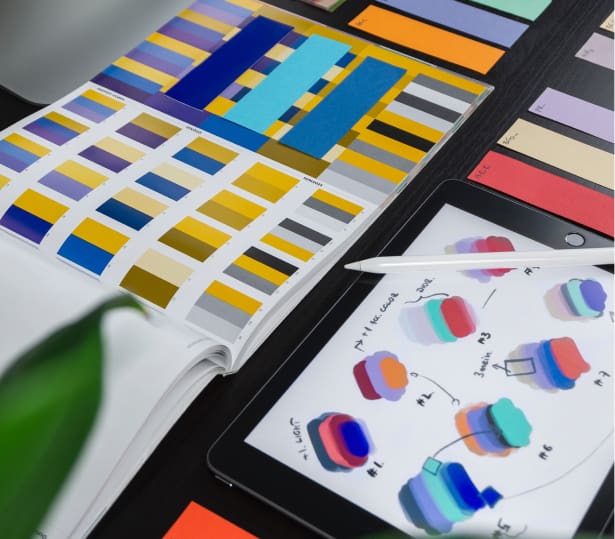Helping Sales Through Buyer Personas

Every business owner would benefit from having a “model customer” who could provide feedback and express preferences and opinions about the different product or service offerings their business presented to the public. Interviewing such a customer would give invaluable guidance in the best way to market to a qualified client. While you can’t just average out customer expectations (people are too complex and unique) or predict every variable, you can still use that model to gain deep business insights.
Even B2B organizations are essentially customer-driven. It doesn’t matter if your end-user is an individual consumer-level customer or a key decision-maker for an enterprise-level business. Being able to anticipate a customer’s needs and wants and buying behavior is one of the keys to an organization’s ongoing success. If you could know what your customer wanted, when they needed it, and how they preferred it to be presented, your success would be virtually guaranteed.
Defining Buyer Personas
You would need a crystal ball or an on-staff oracle to know these things with absolute certainty, but developing buyer personas is the next best thing. While a well-developed buyer persona may not give you or your organization psychic abilities, it enables you to make “best guesses” based on definable data points and the feedback of actual customers.
A buyer persona is essentially an amalgam of your ideal customer, the personification of the individual you’re building a marketing strategy around. Developing these personas is done through research and analysis as well as with interviews with actual customers.
A buyer persona is much more fleshed-out and robust than just a list of demographic information. It will include details regarding everything from their preferred content to how they engage with your sales process to what typical challenges they might face—and need a vendor to help them overcome.
A buyer persona isn’t just a summary. It’s not someone’s job position or segmentation data; it’s the representation of the individual customer. Though buyer personas are fictionalized representations, it helps to think of them as individuals with distinct personalities.
Important Persona Distinctions
Understanding the best way to utilize buyer personas—and potential pitfalls to negotiate when developing and calling on them for decision-making purposes—involves a brief look at what not to do. Again: these aren’t demographic profiles. While you can glean valuable information from market research and sales data, it doesn’t tell the whole story.
Market demographics can have blind spots that are difficult to identify and overcome. Knowing that your target customer is easier to reach late in the week, after lunch, and before 4:30 PM is great, but understanding why allows you to anticipate and uncover the customer’s desires and needs—and pain points—that wouldn’t be present in marketing or sales reports.
Think of it less as a list of facts and more like an introduction or a sort of informal CV. “Male, caucasian, aged 35-50, annual income between $75-160k” gives you just enough information to make some educated guesses, but little more than that. You end up with descriptors that could apply to a wide and varied range of people. Those kinds of broad brush strokes obscure a lot of detail.
Buyer persona development puts a face on that blank demographic mannequin and allows you to relate to the person behind the purchase and better target customers. Personal details like what a person does for leisure—hiking and camping or online gaming—can flesh out the other available data in surprising and practical ways.
Knowing that a typical customer might be passionate about climate change issues, not a fan of reality TV, and someone who loves to cook gourmet meals can help you better serve both that customer and other customers like them, even if none of that personal information is relevant to your product. Being able to understand what goes into each individual consumer decision allows you to more specifically meet their needs.
Personas Non Grata
Marketing involves both inclusion and exclusion. You want to attract the right customer—someone who has a problem you can solve—but at the same time, you want to filter out the kinds of people who won’t be well-served by the solutions you’re bringing to market.
Though that might sound like a critical or judgmental way to relate to the buying public, it serves the interests of your organization as well as that of the individuals who another company would better serve. No one can be all things to all people. Defining the type of customer your company would best suit also allows you to determine the opposite.
No one wants unhappy customers—and unhappy customers can be a significant drain on resources. Offering customer or technical support for a product that won’t solve a specific customer’s problem costs time and money, as do product returns and (especially) bad reviews and negative word-of-mouth. Being able to segment “bad fit” customers is almost as valuable as understanding how to serve ideal customers best. It allows your organization to focus on serving the right people and frees them from focusing on customers who can cost more than they bring to your efforts.
Buyer Personas, Brought to Life
Doing the research and conducting interviews with actual customers is great, but all that effort is meaningless unless it is part of a holistic strategy based around utilizing that information and working with buyer personas proactively and strategically.
Develop buyer personas by department, and tailor the information to fit the need of each discrete team. Your customer support staff may not be best served by the same sort of details you would provide to your sales or customer retention people. Working with team leads in developing these personas allows further customization of this tool and will better serve the customer—and your bottom line.
Just as you wouldn’t present sales-specific persona information to your support crew, you wouldn’t want your various teams to have to rapidly switch their approach to compensate for widely varied persona types. Group and organize data related to specific personas, and work with the actual customers best represented by specific personas in batches as much as possible.
For instance, sales could contact “early bird” customers on Mondays and Tuesdays, then switch gears to reach out to those customers who prefer late-day communication on Wednesdays and Thursdays. Focusing on a specific type of customer and their needs will also allow you to tailor internal efforts and workflow based on this kind of proactive segmentation.
From Persona to Person
Helping customers by better understanding what “makes them tick” benefits the level of service you can offer them and increases customer satisfaction. It also saves time and resources by enabling you to optimize workflow and direct effort where—and how—it is most effective. As customer expectations continue to move toward personalized, tailored experiences, it’s important to size up customers in order to provide precisely what they need, when they need it, and in a fashion that makes them feel understood and valued.





